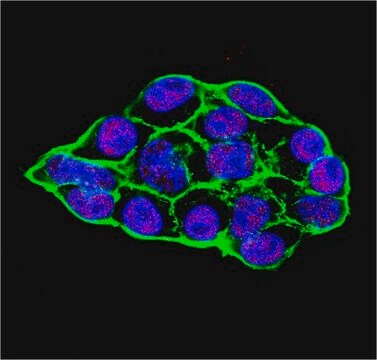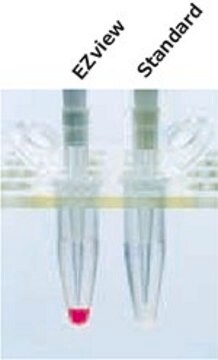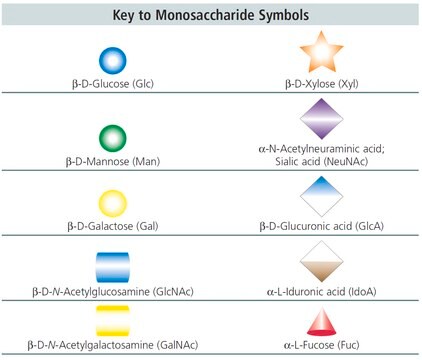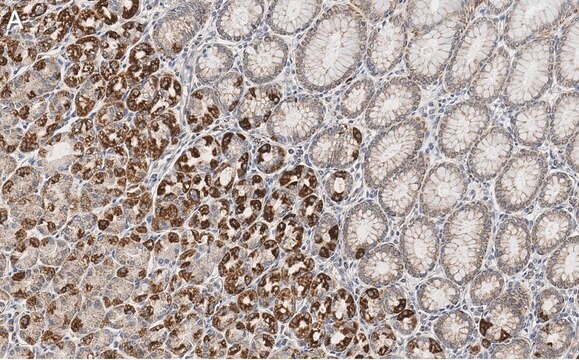推薦產品
一般說明
This product consists of the catalytic domain (CD) of mTET1 (amino acids 1366-2039) and includes an N-terminal polyhistidine tag. It has a calculated molecular mass of 75.8 kDa. This protein is produced in mammalian cells (HEK 293), without the use of serum. The mammalian cells expression system allows proper post-translational modifications and folding, and often supports higher specific activity of the protein.
生化/生理作用
Mouse ten eleven translocase 1 (mTET1) is a dioxygenase that catalyzes the conversion of 5-methylcytosine (5mC) to 5-hydroxymethylcytosine (5hmC), and plays a key role in active DNA demethylation. mTET1 also causes the sequential oxidation of 5-formylcytosine (5fC), and 5-carboxylcytosine (5caC). The full structure of TET1 includes a double-stranded β-helix (DSBH) domain, a cysteine-rich domain, and a CXXC domain. The dioxygenase activity of DSBH is dependent on Fe2+ and 2-oxoglutarate.
mTET1-mediated cytosine methylation on C5 is a mammalian genome epigenetic modification, which is involved in transcriptional regulation.
TET1 is utilized in TET-assisted bisulfite sequencing (TAB-seq), a method for the identification of 5hmC at single-base resolution, and the determination of its abundance at each modification site. This method is an improvement of the traditional bisulfite sequencing, which has been widely used to detect 5mC at single-base resolution, but cannot differentiate 5mC from 5hmC, as both resist deamination during the treatment of DNA with sodium bisulfite. The TAB-seq method uses mTET1 to selectively convert 5mC to 5caC in two steps: protection of 5hmC through glucosylation, and mTET1-mediated oxidation of 5mC to 5caC.
mTET1-mediated cytosine methylation on C5 is a mammalian genome epigenetic modification, which is involved in transcriptional regulation.
TET1 is utilized in TET-assisted bisulfite sequencing (TAB-seq), a method for the identification of 5hmC at single-base resolution, and the determination of its abundance at each modification site. This method is an improvement of the traditional bisulfite sequencing, which has been widely used to detect 5mC at single-base resolution, but cannot differentiate 5mC from 5hmC, as both resist deamination during the treatment of DNA with sodium bisulfite. The TAB-seq method uses mTET1 to selectively convert 5mC to 5caC in two steps: protection of 5hmC through glucosylation, and mTET1-mediated oxidation of 5mC to 5caC.
其他說明
Catalyzes the conversion of the modified DNA base 5-methylcytosine (5-mC) to 5-hydroxymethylcytosine (5-hmC).
儲存類別代碼
10 - Combustible liquids
水污染物質分類(WGK)
WGK 1
我們的科學家團隊在所有研究領域都有豐富的經驗,包括生命科學、材料科學、化學合成、色譜、分析等.
聯絡技術服務








